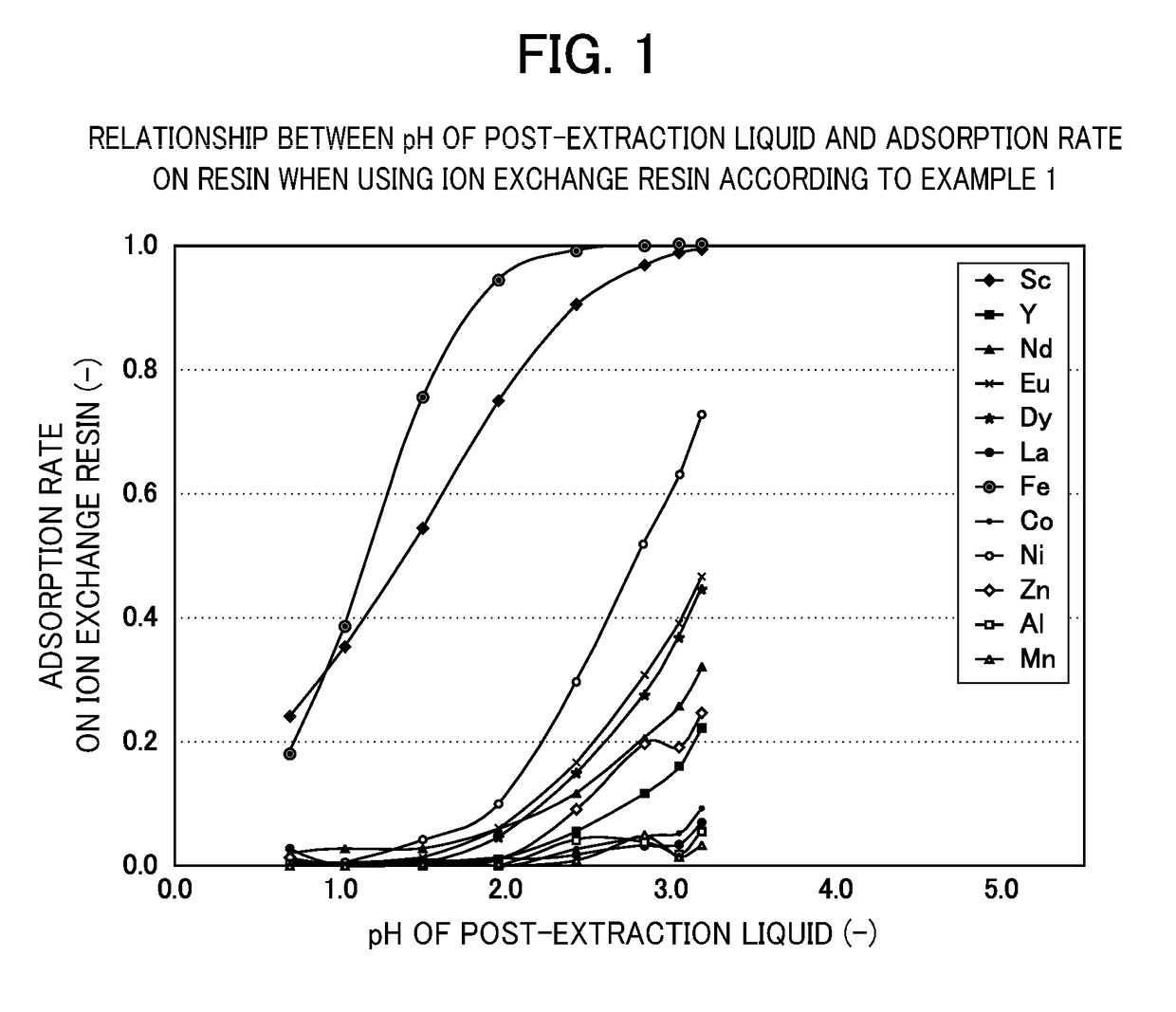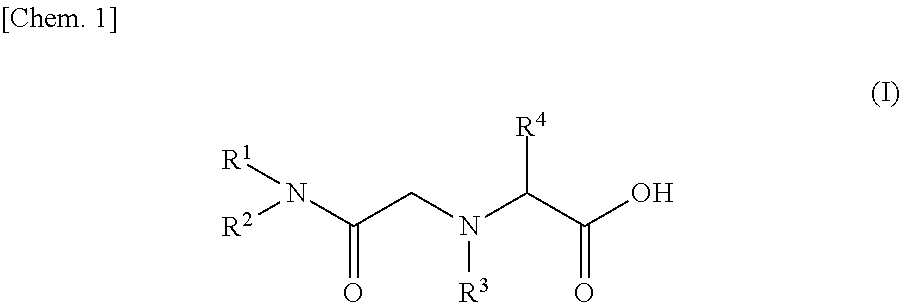Ion exchange resin and method for adsorbing and separating metal
- Summary
- Abstract
- Description
- Claims
- Application Information
AI Technical Summary
Benefits of technology
Problems solved by technology
Method used
Image
Examples
example 1
[0060]As an example of amide derivatives forming an ion exchange resin according to the present invention, N—[N,N-bis(2-ethylhexyl)aminocarbonylmethyl]glycine (or also referred to as N,N-di(2-ethylhexyl)acetamide-2-glycine, and hereinafter referred to as “D2EHAG”) into which two 2-ethylhexyl groups were introduced was used. The chemical formula of D2EHAG is described in Patent Document 3 mentioned above.
[0061]An ion exchange resin having D2EHAG was prepared as follows.
[0062](1) 4.37 g of chloroacetyl chloride (corresponding to 3 equivalents with respect to the amine of silica gel which is supported) and 1.32 g of triethylamine (TEA) were collected, and these were dissolved by adding 70 ml of dichloromethane (DCM).
[0063](2) 10 g of 3-aminopropyl silica gel was added to the solution obtained in (1), and the obtained mixture was stirred for a day while maintaining room temperature.
[0064](3) After stirring, the product was filtered, and washed by adding methanol.
[0065](4) After washing,...
example 2
[0070]The ion exchange resin according to Example 2 (glycine aceto(ethylenediamino)propyl silica gel) was obtained in the same manner as in Example 1 except that 3-aminopropyl silica gel was changed to 3-(ethylenediamino)propyl silica gel.
[0071]A glycinamide derivative and further a normal-methylglycine derivative, a histidinamide derivative and the like are also known as an amide derivative, and these can be also supported as a functional group on a carrier to make an ion exchange resin as in the case with the above glycinamide derivative.
[0072]Eight types of acid solution were prepared, which each contained scandium (Sc), yttrium (Y), neodymium (Nd), europium (Eu), dysprosium (Dy), lanthanum (La), iron (Fe), cobalt (Co), nickel (Ni), zinc (Zn), aluminum (Al) and manganese (Mn) at 1×10-4 mol / l and were adjusted to pH 0.7, 1.0, 1.5, 2.0, 2.5, 3.0, 3.3 and 3.7. The pH was adjusted using sulfuric acid, ammonium sulfate and ammonia with a concentration of 0.2 mol / l.
[0073]Next, with res...
PUM
 Login to View More
Login to View More Abstract
Description
Claims
Application Information
 Login to View More
Login to View More - R&D
- Intellectual Property
- Life Sciences
- Materials
- Tech Scout
- Unparalleled Data Quality
- Higher Quality Content
- 60% Fewer Hallucinations
Browse by: Latest US Patents, China's latest patents, Technical Efficacy Thesaurus, Application Domain, Technology Topic, Popular Technical Reports.
© 2025 PatSnap. All rights reserved.Legal|Privacy policy|Modern Slavery Act Transparency Statement|Sitemap|About US| Contact US: help@patsnap.com



